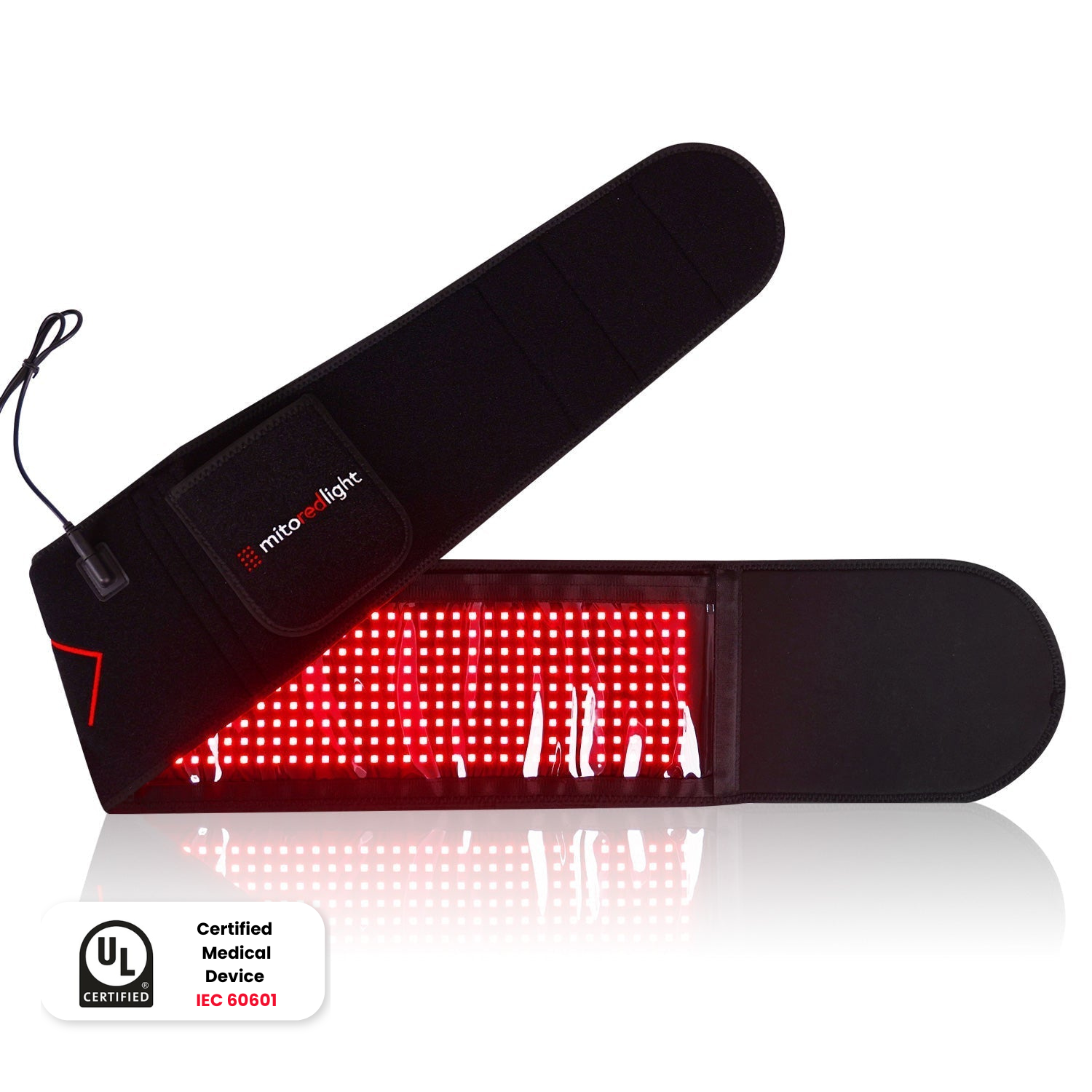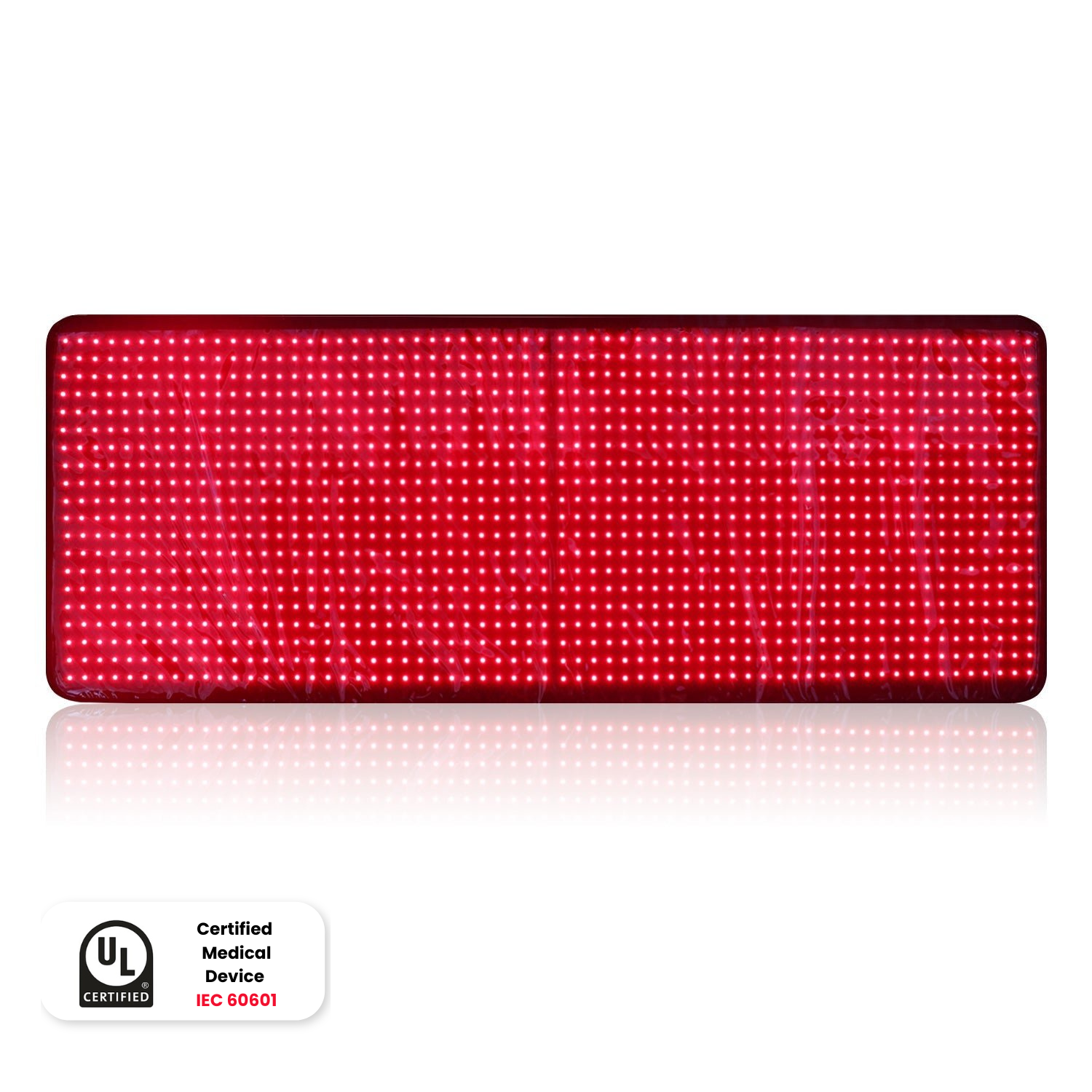DISCLAIMER: Mito Red Light devices are Class II wellness devices aimed at affecting the body through topical heating and supporting cellular function. The information provided in this article and on this site is for educational purposes only and is not intended to imply effectiveness of Mito Red Light devices for any specific application. The information provided in this article and on this site is not intended to diagnose, treat, cure, or prevent any disease, is not a substitute for consultation with a licensed medical provider and should not be construed as medical advice. Click here to read our article on potential contraindications of red light therapy..
Authored By Benjamin Caleb Williams
Red light therapy is a new, groundbreaking approach to non-invasive wellness treatments. It leverages the power of light to help alleviate pain and inflammation, promote tissue regeneration, and improve muscle function.
People researching red light therapy will often encounter conflicting and confusing terms. One of these is the difference between LED lights and lasers. These two light sources can both provide red light but are used very differently and have significant implications for red light therapy. Each light source has its own unique set of characteristics and applications.
Brief Overview of Red Light Therapy
Red light therapy is a non-invasive and painless treatment method that uses specific wavelengths of light to stimulate cellular activity. These wavelengths are thought to promote healing and reduce inflammation and pain.
The therapy is based on the principle that light energy can be absorbed by specific molecules involved in energy production in the cells. This can lead to various physiological changes, such as increased ATP production, enhanced blood flow, and reduced oxidative stress.
Importance of The Right Light Sources
The role of the right light source in red light therapy is essential. The type of light source used can affect whether or not the treatment has any kind of effect. It is essential to understand the differences and applications of each type of light source to ensure that therapy is effective.
Technically, red light therapy is a form of photobiomodulation. Photobiomodulation involves using light to create a biological effect. LEDs and lasers are the two most commonly used light sources in photobiomodulation due to their ability to produce light at very specific wavelengths.
LED versus Lasers Definitions
LED (Light Emitting Diode)
LEDs, or light-emitting diodes, are typically the most commonly used type of light for red light therapy. An LED, or Light Emitting Diode, is a semiconductor device that emits light when an electric current passes through it. This process is known as electroluminescence. In simpler terms, an LED produces light when electrons move around within its semiconductor structure and release energy in the form of light particles.
LED light is characterized by its wavelength and intensity. The wavelength determines the color of the light, and it typically ranges from 400nm (violet) to 700nm (red). Red light therapy uses LEDs that are in the red to infrared range of light.
The intensity of the LED light is measured in lumens, indicating the amount of visible light emitted per second. LED lights are known for being energy-efficient, durable, and have a longer lifespan compared to traditional light sources. They emit light in a specific direction, making them more efficient for various applications, including red light therapy, where specific wavelengths are crucial for effective treatment.
Laser (Light Amplification by Stimulated Emission of Radiation)
The term "Laser" stands for Light Amplification by Stimulated Emission of Radiation. A laser is a device that emits light through a process of optical amplification based on the stimulated emission of electromagnetic radiation. In essence, it produces light by pumping energy into atoms or molecules, exciting them to a higher energy level. When these atoms or molecules return to their normal energy level, they emit light particles, creating a concentrated beam of light.
Laser light is special because all light waves match each other and have a definite relationship to each other. This helps the light travel with minimal spread or divergence and ensures that the wavelength of the light is all the same.
These characteristics make lasers highly focused and able to deliver high amounts of energy to very small, precise areas. This makes them ideal for applications requiring precision, such as surgical procedures and cutting materials. In the context of red light therapy, the characteristics of laser light allow for deep tissue penetration and very targeted treatment. They do not, however, cover a large area, and their focused nature can cause damage to the tissues and eyes.
Comparing LEDs and Lasers
Ultimately, LEDs emit light that is non-coherent and can cover a large treatment area, making them suitable for treating a range of conditions. On the other hand, Lasers emit coherent light, allowing for a focused and intense beam, ideal for targeting specific points in the body.
Applications in Red Light Therapy
Understanding what the different forms of light are is important, but anyone interested in red light therapy should also know how they are actually used in red light therapy.
LED Applications in Red Light Therapy
LEDs emit light in a specific wavelength range and can be designed specifically to produce red or near-infrared light, the wavelengths used in red light therapy. The light emitted by LEDs penetrates the skin and underlying tissues, triggering cellular responses that can promote healing, reduce inflammation, and alleviate pain.
There are several benefits of using LED in red light therapy when compared to lasers. These include:
- Wide coverage - LED light spreads at travels, enabling it to be used to treat larger areas of the body and making it versatile for various applications.
- Safety and comfort - High-quality LEDs are generally safe and do not emit heat, making them comfortable for users.
- Cost-effective - LEDs are more affordable and have a longer lifespan compared to lasers, making them a cost-effective option for red light therapy.
- Accessibility - LED-based red light therapy devices are widely available and easy to use, allowing for home-based treatments.
While there are many benefits to using LED lights, there are some limitations to using LED in red light therapy:
- Lower depth of penetration - The light emitted by LEDs may not penetrate as deeply into the tissues as laser light, potentially decreasing the dose of light it provides to deep tissue.
- Decreased focus - The diffused nature of LED light may result in a less focused treatment compared to lasers.
Laser Applications in Red Light Therapy
Lasers are another prominent light source in light therapies. They are known for their coherence and ability to focus light. Lasers emit concentrated beams of light that can penetrate deeper into the tissues and induce photobiological reactions. The energy of lasers can also allow them to be used to cut or burn tissues in some situations. Lasers are not commonly used in home red light therapy and are more likely to be used in professional settings.
There are many potential benefits to using lasers as a form of light therapy; however, these benefits are typically more niche than those used in the red light therapy most people use. These benefits include:
- Depth of penetration - The higher energy of lasers may allow them to penetrate deeper into the tissues.
- Precision - The coherent and well-organized nature of laser light enables precise targeting of treatment areas, which can be beneficial for targeting specific lesions.
- Intensity - Lasers can emit light at higher intensities, which can be advantageous for cutting or cauterizing applications.
While lasers offer a particular set of benefits, they also have inherent limitations. These limitations are the reason that most home-use red light therapy devices do not incorporate lasers and include:
- Safety concerns - The intensity and focus of laser light necessitate safety precautions to prevent eye damage and burns.
- Cost and accessibility - Laser-based red light therapy devices are generally more expensive and less accessible to the average consumer, often requiring professional supervision.
- Treatment area - Lasers are highly focused and can only be applied to smaller, localized areas. Instead of irradiating an entire muscle, for example, it can only irradiate a single point on the muscle.
Comparison between LEDs and Lasers
In the context of red light therapy, LEDs are the commonly used type of light source. There are several considerations that make this the case:
- Wavelength - Interesting, the ability to produce a specific wavelength is roughly the same in LEDs and lasers. While there are some subtle differences, they both are able to produce the specific wavelengths of light needed for red light therapy.
- Intensity - Lasers are far, far more intense than LEDs. This allows them to cut or burn tissues. LEDs have lower intensity, allowing them to be safely used without the risk of damaging body tissues.
- Focus - Lasers are highly focused, while LEDs cover a wide area. Red light therapy generally is used to cover large areas that include skin, muscles, bones, and other tissues. LEDs provide better general coverage, making them preferred.
- Safety - Because lasers are very intense, there is a risk of burn and eye damage. LEDs do not typically produce light at intensity levels that are dangerous.
- Cost - Lasers are significantly more expensive than LED lights, making them less accessible and impractical for the average person.
It is important to note that many red light researchers will use the term “low-level laser therapy” when referring to light used in red light therapy experiments. This term technically refers to light produced by LEDs, not lasers. LEDs may be referred to in scientific contexts as low-level lasers but are not lasers in the traditional sense.
Next level red light therapy. #biohacking #redlighttherapy pic.twitter.com/SsI1gx6C2b
— Mito Red Light (@mito_red_light) July 7, 2023
Mito Red Light’s Approach
Due to the several advantages that LEDs provide for home-use red light therapy, Mito Red Light uses exclusively LEDs in all but the Mito Red PRO Helmet (uses LEDs and lasers). The quality can vary significantly between different LEDs, and we ensure that our devices include only the best LEDs. This provides you with the optimal wavelengths of light at higher intensities that are more likely to be effective.
At Mito Red Light, we are committed to providing the best quality red light products available. Our panels use LED sources to provide reliable doses of professional-grade red light therapy. We welcome you to review our selection of high-quality products or to contact one of our representatives at 1-866-861-6486(MITO).































